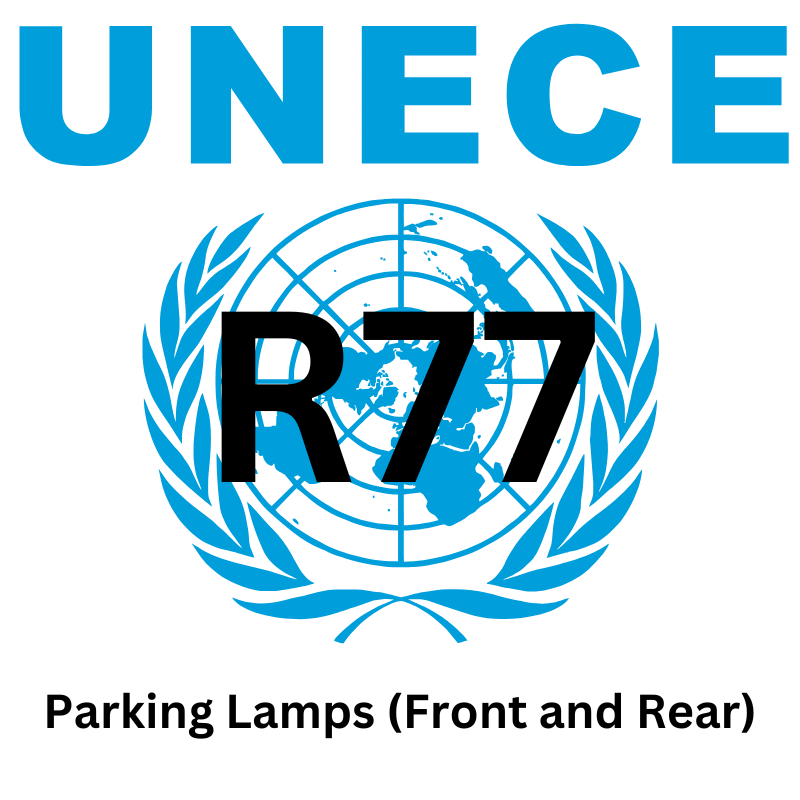Guide To: ECE R77 - Parking Lamps (Front and Rear)
05 July 2018

Guide To: UNECE R77 - Parking Lamps (Front and Rear)
UN ECE Regulation No. 77 provides the uniform provisions concerning the approval of parking lamps (also known as position lamps or parking lights) for power-driven vehicles. These lamps are used to enhance vehicle visibility when the vehicle is stationary, particularly in low-light conditions or when parked in areas where extra visibility is necessary for safety. The regulation specifies the design, performance, and safety requirements for these lamps to ensure their effectiveness.
Scope of the Regulation
UN ECE R77 applies to:
- Parking lamps for vehicles in categories M, N, and T (passenger cars, trucks, and tractors, respectively). The regulation ensures that parking lamps meet standardized safety requirements for enhanced road safety.
Key Features of UN ECE R77
Definitions and Design Requirements:
- A parking lamp is defined as a lamp used to draw attention to the presence of a stationary vehicle.
- The regulation differentiates between different types of parking lamps based on their design, trade name, optical system characteristics, and light source module.
Photometric Characteristics:
- Parking lamps must meet specific light intensity requirements to ensure they are visible but not dazzling to other road users. The light emitted must be between 2 and 60 candelas for forward-facing lamps and between 2 and 30 candelas for rearward-facing lamps.
- The regulation also sets the minimum and maximum light intensity distribution to ensure that the lamp’s light is visible across a wide range of angles.
Colour of Light Emitted:
- The colour of the light emitted by parking lamps must be white for forward-facing lamps and red for rearward-facing lamps. This ensures consistency in vehicle visibility and safety.
Durability and Testing:
- The regulation requires that parking lamps be durable and resistant to normal wear, including exposure to vibration and environmental factors. They are tested under various conditions to ensure that they continue to function effectively over time.
- The photometric performance of the lamps is tested using specific voltage settings (6.75V, 13.5V, or 28.0V, depending on the light source) to ensure accurate light output.
Marking and Approval:
- Each approved parking lamp must bear a clear and legible approval mark. This mark includes the manufacturer's trade name or mark, the approval number, and an indication of the lamp’s light source category (filament or LED).
- The regulation also sets out the process for modifications, extensions, and approvals related to parking lamps.
Conclusion
Parking lamps are essential for maintaining vehicle visibility, especially when parked in low-light conditions. Compliance with UN ECE R77 ensures that these lamps meet stringent international standards for light intensity, colour, and durability. Manufacturers must ensure that parking lamps are approved under this regulation to guarantee their safety and effectiveness on the road.
Guides to ECE Regulations,E-Mark,ECE Regulation 77,Parking Lamps,